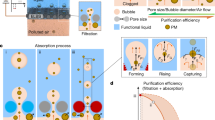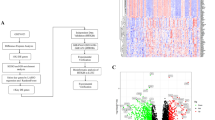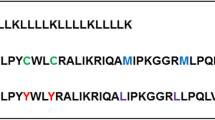Abstract
Particle capture is vital for air purification in environmental protection, regional climate regulation and public health. In particular, filters operating with gas–liquid interfaces can provide efficient particle absorption and removal while serving in a maintenance-free manner. Here a liquid-gating topological gradient microfluidics (LGTGM) device is developed for air purification inspired by the liquid-assisted filtration mechanism of the human respiratory system. The LGTGM device is based on the continuous generation of microbubbles from a supplied gas flow. Due to the large specific interfacial surface area, together with tailored wettability in the device, particulate pollutants in the microbubbles preferentially transfer across the gas–liquid interface and enter a collection liquid. Benefiting from the fine regulation of bubble generation dynamics, multiple LGTGM devices can be combined in series or parallel to achieve efficient air purification as well as high-throughput processing. Moreover, the application potential of LGTGM is demonstrated for smoke filtration, disease prevention and visual detection.

This is a preview of subscription content, access via your institution
Access options
Subscribe to this journal
Receive 12 digital issues and online access to articles
118,99 € per year
only 9,92 € per issue
Buy this article
- Purchase on SpringerLink
- Instant access to full article PDF
Prices may be subject to local taxes which are calculated during checkout





Similar content being viewed by others
Data availability
All data are available within the article and its Supplementary Information.
References
Hill, W. et al. Lung adenocarcinoma promotion by air pollutants. Nature 616, 159–167 (2023).
Sengupta, S. et al. Subnational implications from climate and air pollution policies in India’s electricity sector. Science 378, eabh1484 (2022).
Kotsiliti, E. Air pollution and oesophageal cancer risk. Nat. Rev. Gastroenterol. Hepatol. https://doi.org/10.1038/s41575-023-00786-z (2023).
Freese, L. M., Chossière, G. P., Eastham, S. D., Jenn, A. & Selin, N. E. Nuclear power generation phase-outs redistribute US air quality and climate-related mortality risk. Nat. Energy https://doi.org/10.1038/s41560-023-01241-8 (2023).
Gu, B. J. et al. Abating ammonia is more cost-effective than nitrogen oxides for mitigating PM2.5 air pollution. Science 374, 758–762 (2021).
Colmer, J., Hardman, I., Shimshack, J. & Voorheis, J. Disparities in PM2.5 air pollution in the United States. Science 369, 575–578 (2020).
Heald, C. L. & Kroll, J. H. A radical shift in air pollution. Science 374, 688–689 (2021).
Thurston, G. D., Chen, L. C. & Campen, M. Particle toxicity’s role in air pollution. Science 375, 506 (2022).
Nel, A. Air pollution-related illness: effects of particles. Science 308, 804–806 (2005).
Zhang, Y. M. et al. Continuous air purification by aqueous interface filtration and absorption. Nature 610, 74–80 (2022).
Zhang, G. H. et al. High-performance particulate matter including nanoscale particle removal by a self-powered air filter. Nat. Commun. 11, 1653 (2020).
Li, Y. Y. et al. Semi-interpenetrating polymer network biomimetic structure enables superelastic and thermostable nanofibrous aerogels for cascade filtration of PM2.5. Adv. Funct. Mater. 30, 1910426 (2020).
Zhou, Z. P., Liu, T. Y., Khan, A. U. & Liu, G. L. Block copolymer-based porous carbon fibers. Sci. Adv. 5, eaau6852 (2019).
Liang, B. et al. Microporous membranes comprising conjugated polymers with rigid backbones enable ultrafast organic-solvent nanofiltration. Nat. Chem. 10, 961–967 (2018).
Li, P. et al. Metal–organic frameworks with photocatalytic bactericidal activity for integrated air cleaning. Nat. Commun. 10, 2177 (2019).
Nataraj, S. K., Yang, K. S. & Aminabhavi, T. M. Polyacrylonitrile-based nanofibers—a state-of-the-art review. Prog. Polym. Sci. 37, 487–513 (2012).
Li, M. Q. et al. Novel hollow fiber air filters for the removal of ultrafine particles in PM2.5 with repetitive usage capability. Environ. Sci. Technol. 51, 10041–10049 (2017).
Zhao, X. L. et al. Low-resistance dual-purpose air filter releasing negative ions and effectively capturing PM2.5. ACS Appl. Mater. Interfaces 9, 12054–12063 (2017).
Wang, Y. X. et al. Polytetrafluoroethylene/polyphenylene sulfide needle-punched triboelectric air filter for efficient particulate matter removal. ACS Appl. Mater. Interfaces 11, 48437–48449 (2019).
Zhang, Y. G., Zhu, Y. J., Xiong, Z. C., Wu, J. & Chen, F. Bioinspired ultralight inorganic aerogel for highly efficient air filtration and oil–water separation. ACS Appl. Mater. Interfaces 10, 13019–13027 (2018).
Yang, C. Y., Yu, Y. R., Shang, L. R. & Zhao, Y. J. Flexible hemline-shaped microfibers for liquid transport. Nat. Chem. Eng. 1, 87–96 (2024).
Liu, C. et al. Transparent air filter for high-efficiency PM2.5 capture. Nat. Commun. 6, 6205 (2015).
Kwon, H. J. et al. Long-lifetime water-washable ceramic catalyst filter for air purification. Nat. Commun. 14, 520 (2023).
Wang, Y. et al. Bio-based antimicrobial ionic materials fully composed of natural products for elevated air purification. Adv. Sustain. Syst. 4, 2000046 (2020).
Zhang, Y. Y. et al. Preparation of nanofibrous metal–organic framework filters for efficient air pollution control. J. Am. Chem. Soc. 138, 5785–5788 (2016).
Stanford, M. G. et al. Self-sterilizing laser-induced graphene bacterial air filter. ACS Nano 13, 11912–11920 (2019).
Wang, Q. F. et al. Polarity-dominated stable N97 respirators for airborne virus capture based on nanofibrous membranes. Angew. Chem. Int. Ed. Engl. 60, 23756–23762 (2021).
Liu, M., Wang, S. & Jiang, L. Nature-inspired superwettability systems. Nat. Rev. Mater. 2, 17036 (2017).
Hou, X., Hu, Y., Grinthal, A., Khan, M. & Aizenberg, J. Liquid-based gating mechanism with tunable multiphase selectivity and antifouling behaviour. Nature 519, 70–73 (2015).
Miao, W., Tian, Y. & Jiang, L. Bioinspired superspreading surface: from essential mechanism to application. Acc. Chem. Res. 55, 1467–1479 (2022).
Epstein, A. K., Wong, T. S., Belisle, R. A., Boggs, E. M. & Aizenberg, J. Liquid-infused structured surfaces with exceptional anti-biofouling performance. Proc. Natl Acad. Sci. USA 109, 13182–13187 (2012).
Sheng, Z. Z. et al. Liquid gating elastomeric porous system with dynamically controllable gas/liquid transport. Sci. Adv. 4, eaao6724 (2018).
Hoeven, J., Shneidman, A. V., Nicolas, N. J. & Aizenberg, J. Evaporation-induced self-assembly of metal oxide inverse opals: from synthesis to applications. Acc. Chem. Res. 55, 1809–1820 (2022).
Sznitman, J. Revisiting airflow and aerosol transport phenomena in the deep lungs with microfluidics. Chem. Rev. 122, 7182–7204 (2022).
Schneider, J. L. et al. The aging lung: physiology, disease, and immunity. Cell 184, 1990–2019 (2021).
Jorgensen, A. M., Yoo, J. J. & Atala, A. Solid organ bioprinting: strategies to achieve organ function. Chem. Rev. 120, 11093–11127 (2020).
Mi, S., Fu, T. T., Zhu, C. Y., Jiang, S. C. & Ma, Y. G. Mechanism of bubble formation in step-emulsification devices. AIChE J. 66, e16777 (2020).
Eggersdorfer, M. L., Seybold, H., Ofner, A., Weitz, D. A. & Studart, A. R. Wetting controls of droplet formation in step emulsification. Proc. Natl Acad. Sci. USA 115, 9479–9484 (2018).
Dinsmore, A. D. et al. Colloidosomes: selectively permeable capsules composed of colloidal particles. Science 298, 1006–1009 (2002).
Wei, Y., Zhang, Q. & Thompson, J. E. The wetting behavior of fresh and aged soot studied through contact angle measurements. Atmos. Clim. Sci. 7, 11–22 (2017).
Binks, B. P. & Lumsdon, S. O. Influence of particle wettability on the type and stability of surfactant-free emulsions. Langmuir 16, 8622–8631 (2000).
Acknowledgements
This work was supported by the National Natural Science Foundation of China (T2225003 and 32271383), the National Key Research and Development Program of China (2022YFB4700100), the Nanjing Medical Science and Technique Development Foundation (ZKX21019), the Clinical Trials from Nanjing Drum Tower Hospital (2022-LCYJ-ZD-01) and the Guangdong Basic and Applied Basic Research Foundation (2021B1515120054).
Author information
Authors and Affiliations
Contributions
Y.Z. and L. Shang conceived the idea and designed the experiment; H.C. conducted experiments and data analysis; H.C., L. Shang and Y.Z. wrote the paper. H.C., L. Sun, Y.W., L.C. and L. Shang contributed to scientific discussion of the paper.
Corresponding authors
Ethics declarations
Competing interests
The authors declare no competing interests.
Peer review
Peer review information
Nature Chemical Engineering thanks Taotao Fu and the other, anonymous, reviewer(s) for their contribution to the peer review of this work.
Additional information
Publisher’s note Springer Nature remains neutral with regard to jurisdictional claims in published maps and institutional affiliations.
Supplementary information
Supplementary Information
Supplementary Figs. 1–22 and Discussion.
Supplementary Video 1
Generation of bubbles from a nozzle featured with topological confinement.
Supplementary Video 2
Generation of bubbles by LGTGM with a single nozzle.
Supplementary Video 3
Generation of bubbles by LGTGM with parallel nozzles.
Supplementary Video 4
Particle transfer at the gas–liquid interface.
Source data
Source Data Fig. 2
Statistical source data.
Source Data Fig. 3
Statistical source data.
Source Data Fig. 4
Statistical source data.
Source Data Fig. 5
Statistical source data.
Rights and permissions
Springer Nature or its licensor (e.g. a society or other partner) holds exclusive rights to this article under a publishing agreement with the author(s) or other rightsholder(s); author self-archiving of the accepted manuscript version of this article is solely governed by the terms of such publishing agreement and applicable law.
About this article
Cite this article
Chen, H., Sun, L., Wang, Y. et al. Biomimetic air purification with liquid-gating topological gradient microfluidics. Nat Chem Eng 1, 650–660 (2024). https://doi.org/10.1038/s44286-024-00128-z
Received:
Accepted:
Published:
Issue Date:
DOI: https://doi.org/10.1038/s44286-024-00128-z
This article is cited by
-
Biomaterial-based drug delivery systems in the treatment of inner ear disorders
Journal of Nanobiotechnology (2025)
-
Gas–liquid two-phase bubble flow spinning for hydrovoltaic flexible electronics
Nature Communications (2025)



